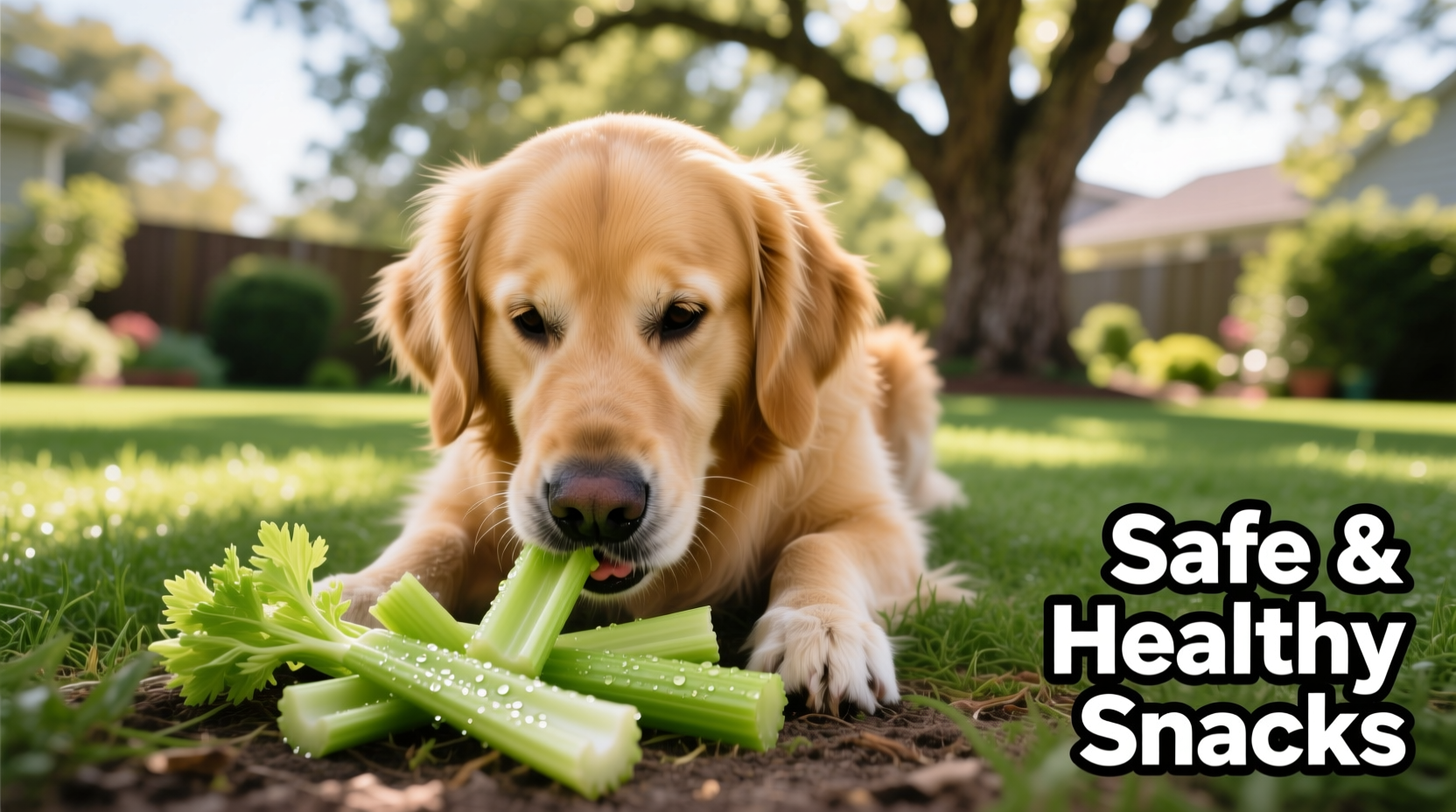Why Celery Can Be a Healthy Treat for Dogs
When prepared correctly, celery provides several health benefits that make it a smart occasional treat for your canine companion. Unlike many commercial dog treats loaded with calories and artificial ingredients, celery offers natural nutrition without the guilt.
Veterinary nutritionists at the American Kennel Club confirm that celery contains vitamins A, K, and C, plus potassium and folate that support your dog's immune system and overall health. The high water content (approximately 95%) makes it an excellent hydrating snack, particularly during warmer months.
| Nutrient | Per 100g Celery | Benefit for Dogs |
|---|---|---|
| Water Content | 95% | Promotes hydration and kidney function |
| Vitamin A | 22 mcg | Supports vision and immune health |
| Vitamin K | 29.6 mcg | Aids blood clotting and bone health |
| Potassium | 260 mg | Regulates fluid balance and nerve signals |
Important Safety Considerations When Feeding Celery to Dogs
While celery offers benefits, certain preparation mistakes can turn this healthy snack into a potential hazard. Understanding these risks ensures your dog enjoys celery safely.
Choking and Digestive Risks
The American Veterinary Medical Association notes that celery's fibrous strings pose significant choking hazards, particularly for small breeds. These strings can also cause digestive discomfort if not properly prepared.
According to emergency veterinary data from the Cornell University Hospital for Animals, approximately 12% of foreign body obstructions in dogs result from improperly prepared vegetables, with celery being among the top five culprits.
Safe Preparation Guidelines
- Thoroughly wash celery to remove pesticides (organic is preferable)
- Remove all leaves which contain higher concentrations of certain compounds
- Cut into small, bite-sized pieces no longer than 1 inch
- Consider steaming for dogs with sensitive digestion
- Remove fibrous strings using a vegetable peeler for small dogs

Recommended Serving Sizes by Dog Size
Portion control is critical when feeding celery to dogs. Even healthy foods can cause digestive upset when given in excess. The following guidelines come from board-certified veterinary nutritionists at the Ohio State University Veterinary Medical Center.
- Toy breeds (under 10 lbs): 1-2 small pieces (½ inch long), once or twice weekly
- Small dogs (10-25 lbs): 2-3 pieces (1 inch long), 1-2 times weekly
- Medium dogs (25-50 lbs): 3-4 pieces (1-2 inches long), 2-3 times weekly
- Large dogs (50+ lbs): 4-5 pieces (2 inches long), 2-3 times weekly
Introduce celery gradually to monitor your dog's tolerance. Some dogs may experience mild gas or loose stools when first trying new vegetables. If these symptoms persist beyond 24 hours, discontinue use and consult your veterinarian.
When Celery Might Not Be Appropriate
Celery isn't suitable for all dogs in every situation. Consider these limitations:
- Dogs with kidney disease should avoid celery due to its potassium content
- Puppies under 6 months should not receive celery due to choking risks
- Dogs with sensitive stomachs may tolerate cooked celery better than raw
- Overweight dogs on strict diets should have celery portions counted toward daily calories
The ASPCA Animal Poison Control Center confirms celery itself isn't toxic to dogs, but emphasizes that any new food should be introduced cautiously, especially for dogs with existing health conditions.
Healthier Alternatives to Consider
If your dog doesn't tolerate celery well, these vet-approved alternatives offer similar benefits with potentially fewer risks:
- Cucumber slices - Lower fiber content, excellent hydration
- Carrot sticks (cooked) - Softer texture, rich in beta-carotene
- Green beans (steamed) - Easier to digest, high in fiber
- Zucchini slices - Gentle on sensitive stomachs
Always remember that treats—including healthy vegetable options—should comprise no more than 10% of your dog's daily caloric intake. The majority of nutrition should come from a complete and balanced commercial dog food or veterinarian-approved homemade diet.
Frequently Asked Questions
Can dogs eat celery leaves?
No, dogs should not eat celery leaves. The leaves contain higher concentrations of certain compounds that can cause digestive upset in dogs. Always remove leaves before preparing celery for your dog.
How often can I give my dog celery?
Veterinarians recommend limiting celery to 1-3 times per week depending on your dog's size. Daily consumption can lead to digestive issues due to the high fiber content. Always monitor your dog for any adverse reactions when introducing new foods.
Is raw or cooked celery better for dogs?
Both can be appropriate depending on your dog's needs. Raw celery provides dental benefits through its crunchy texture, while cooked celery is easier to digest for dogs with sensitive stomachs. Always cut cooked celery into small pieces as it becomes more slippery and potentially harder to chew safely.
What should I do if my dog ate too much celery?
If your dog consumed an excessive amount of celery, monitor for vomiting, diarrhea, or signs of abdominal discomfort. Most cases resolve with fasting for 12-24 hours and offering small amounts of water. Contact your veterinarian if symptoms persist beyond 24 hours or if your dog shows signs of distress.











 浙公网安备
33010002000092号
浙公网安备
33010002000092号 浙B2-20120091-4
浙B2-20120091-4